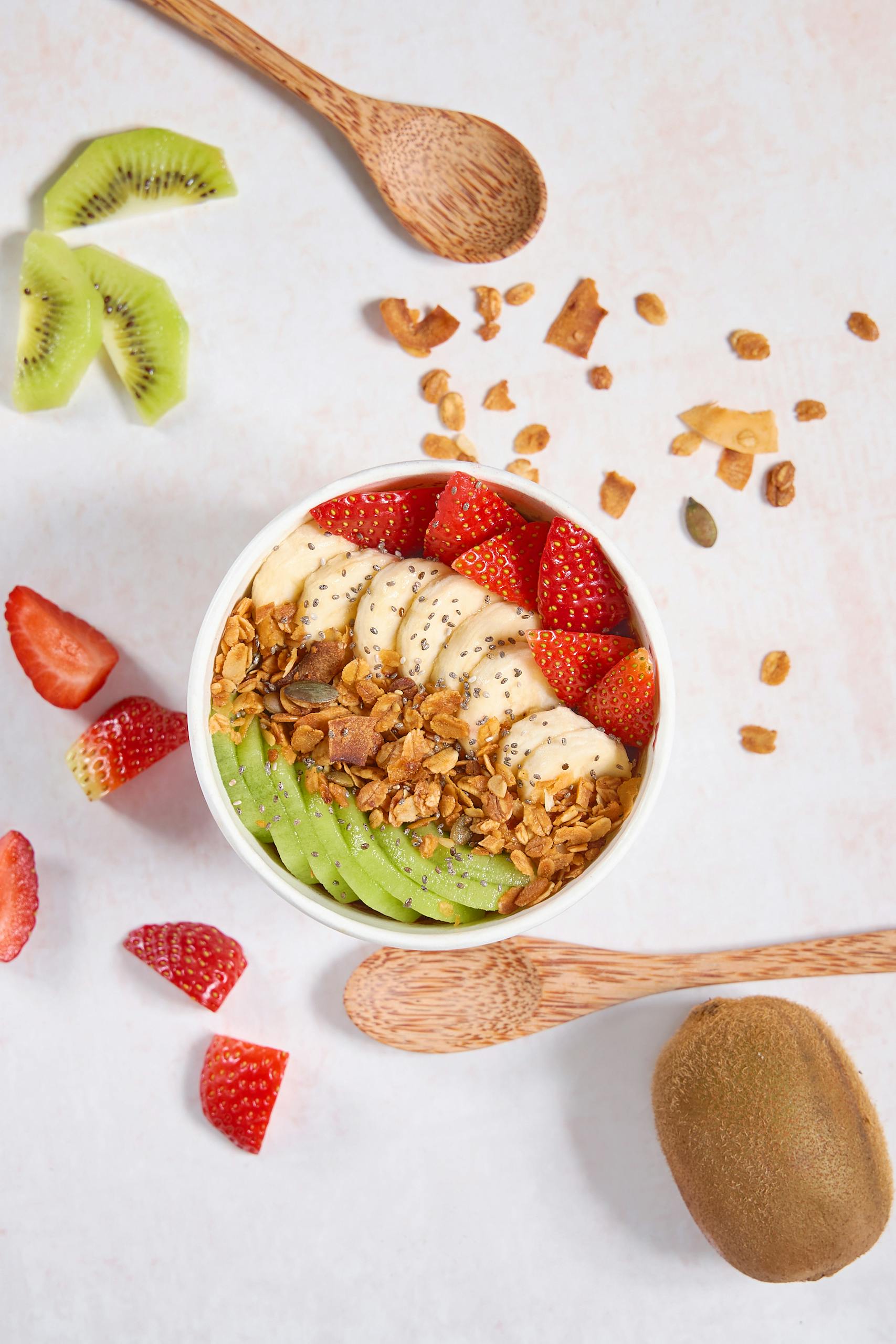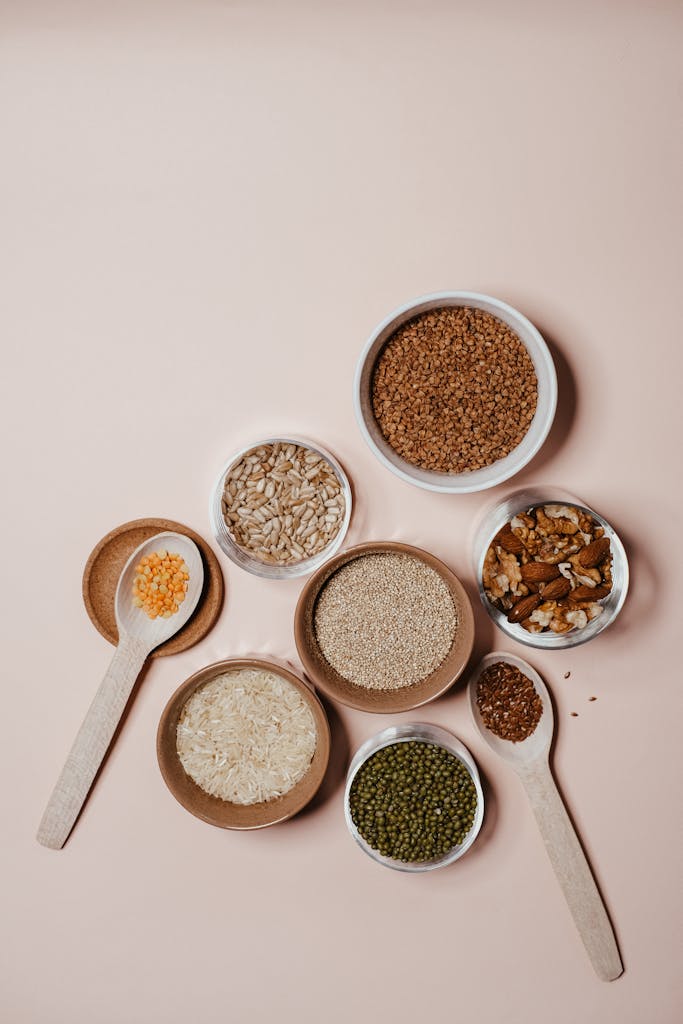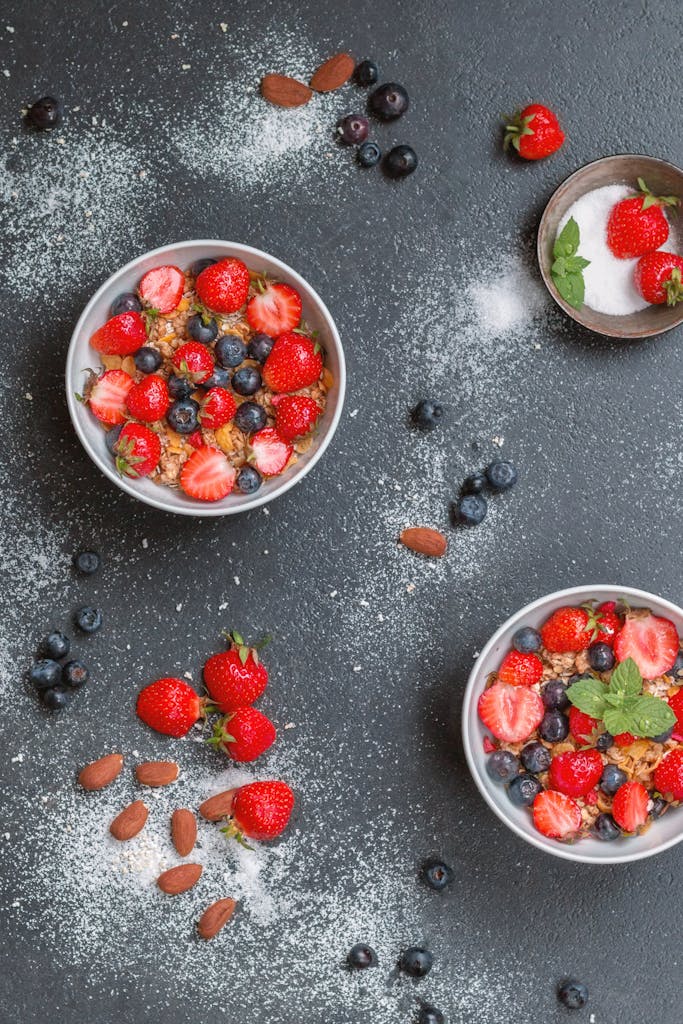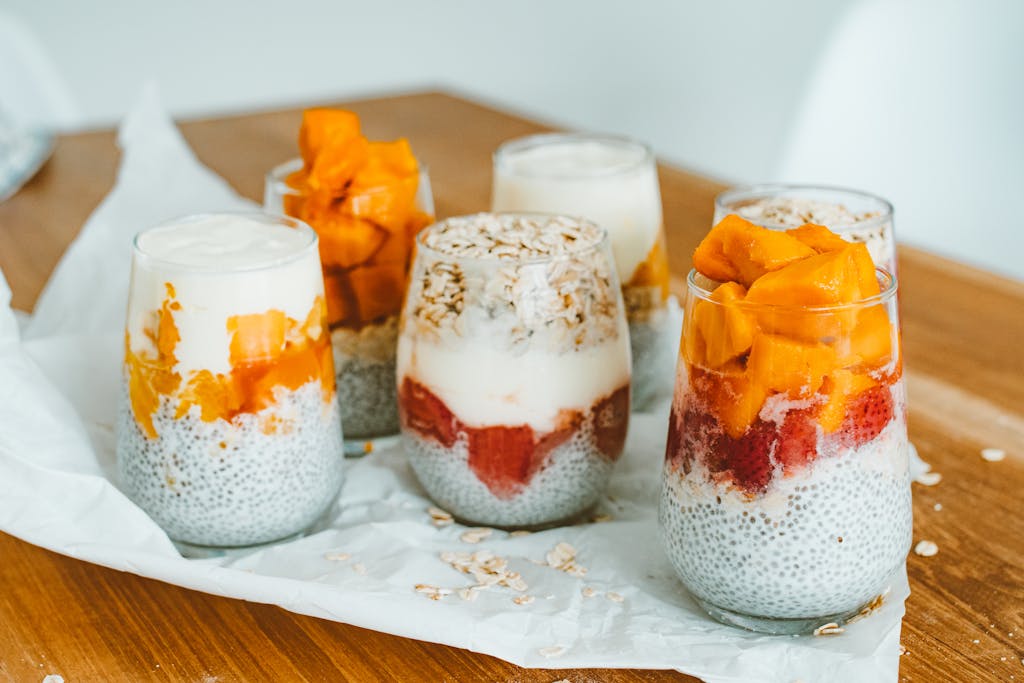Lower Cholesterol with Soluble Fiber

Getting my yearly physical often feels like getting graded. Did I do enough? What will my labs show? For those with high cholesterol it can be a stressful experience. If your latest levels are too high, you are not alone. While we can’t change our genes, there are lifestyle changes you can make to lower your cholesterol levels. As a registered dietitian, I am a big fan of looking first at foods we can add in to support our health instead of foods we need to limit. Soluble fiber is my favorite heart healthy addition! Read on to learn about health benefits of soluble fiber and ideas for how to easily add more fiber to your diet.
What Is Soluble Fiber?
Before diving into science, let’s start with the basics. Fiber comes in two types: soluble and insoluble. Most plant-based foods contain both. Soluble fiber dissolves in water and forms a gel-like substance in your digestive system. This ability to absorb water, forming a gel, is what helps soluble fiber lower cholesterol levels. Foods high in soluble fiber include fruits, vegetables, legumes, and whole grains.

How Soluble Fiber Lowers Cholesterol & Supports Health
Now, let’s break down how soluble fiber helps lower cholesterol and promotes overall health.
1. Binding to Cholesterol in the Gut
When you eat foods high in soluble fiber, the fiber forms a gel-like substance in your digestive tract. This gel binds to cholesterol molecules, especially LDL cholesterol, and prevents them from being absorbed into the bloodstream. The bound cholesterol is then excreted in your stool. This helps reduce the amount of cholesterol in your bloodstream, leading to lower cholesterol levels.
2. Supporting a Healthy Gut
Soluble fiber doesn’t just help with cholesterol. It also nourishes the beneficial bacteria in your gut. These bacteria ferment the fiber, producing short-chain fatty acids that support your health. A healthy gut is essential for proper digestion, a strong immune system, and even mental well-being.
3. Lowering Blood Sugar Levels
Soluble fiber also helps regulate blood sugar by slowing down the absorption of carbohydrates. This means smaller spikes in blood sugar, which reduces the risk of insulin resistance and diabetes. If you are interested in learning more tips on how to lower your blood sugar levels, see our blog entry “The #1 Habit to Lower Blood Sugar: A Registered Dietitian’s Guide”.
4. Keeping You Full and Satisfied
Soluble fiber helps you feel fuller for longer. As it forms a gel in your stomach, it slows digestion, making you feel satisfied and reducing cravings.
How Much Soluble Fiber Should You Eat?
The general recommendation for fiber is 25 grams per day for women and 38 grams for men. Yet, many people don’t reach these targets. Most of the fiber you eat should come from a combination of soluble and insoluble fibers. Studies show that eating 5-10 grams of soluble fiber daily can significantly lower LDL cholesterol levels.
To give you an idea of how much fiber is in some common foods:
- Oatmeal: 1-2 grams per serving
- Apple: 1 gram
- Beans or lentils: 4-5 grams per serving
By including several of these foods in your daily meals, you can hit your fiber target.
Simple and Tasty Ways to Add Soluble Fiber to Your Meals

Adding more fiber to your meals doesn’t have to be complicated. Here are some easy and delicious ideas to help you get started:
Start Your Day with Oats
Oats are packed with beta-glucan, a type of soluble fiber that is especially effective at lowering cholesterol. Enjoy them hot as oatmeal or prepare overnight oats for a quick, refreshing breakfast.
- For an extra fiber boost, add a spoonful of chia seeds and berries to your oats.
- Use milk (cow’s or soy) or Greek yogurt to make your oats creamy and help keep you full longer.
Add Beans and Lentils to Meals and Snacks

Beans and lentils are fiber powerhouses. They have more soluble fiber per serving than most other foods. You can add them to almost anything!
- Toss canned chickpeas or pre-cooked lentils into salads for a quick protein and fiber boost.
- Try a hearty bean-based soup, like lentil soup or vegetarian chili.
- Snack on roasted chickpeas or roasted edamame.
- Add frozen edamame to stir-fries or fried rice.
- Serve hummus or white bean dip with fresh veggies or pita wedges.
Snack on Fruits
Many fruits are rich in soluble fiber and make for a perfect snack. Apples, pears, and citrus fruits (like oranges) are especially high in soluble fiber.
- Slice an apple and dip it in almond butter for a satisfying snack.
- Pair dates with peanut butter for a sweet and savory treat.
- Enjoy a bowl of berries with Greek yogurt for a fiber-filled snack.
Add Color to Your Plate with Veggies
Vegetables are great sources of fiber. Choose from sweet potatoes, carrots, and Brussels sprouts to add more soluble fiber to your day.
- Serve roasted sweet potatoes as a side dish with your favorite protein.
- Make a veggie stir-fry with Brussels sprouts, carrots, and broccoli.
- Try raw shaved Brussels sprouts in a salad for a crunchy fiber boost.
Add Chia Seeds and Flaxseeds

These tiny seeds are packed with soluble fiber and omega-3 fatty acids, making them an easy addition to many dishes.
- Sprinkle chia seeds into your smoothie for a fiber boost.
- Stir ground flaxseeds into your morning oatmeal or yogurt.
- Make chia pudding by mixing chia seeds with milk (or a dairy-free alternative) and letting it sit overnight.
More Tips for Boosting Fiber Intake
- Go for whole grains: Choose whole grains like brown rice, quinoa, and whole wheat instead of refined grains. These grains have more fiber and nutrients.
- Cook with fiber-rich foods: When preparing meals, think about how you can sneak in more fiber. Add extra vegetables to soups, stews, and sauces, or mix beans into pasta dishes.
- Drink plenty of water: Fiber needs water to work properly in your digestive system. Aim to drink at least 64 ounces of water each day to stay hydrated.
Need Personalized Support? Book a Session with a Registered Dietitian
Ready to take control of your cholesterol and heart health? A registered dietitian can help you make the right dietary changes to boost fiber intake and balance key nutrients for a healthier heart. Get a personalized nutrition plan that fits your lifestyle—Book a virtual nutrition consultation today! Insurance accepted.

One Comment
Comments are closed.